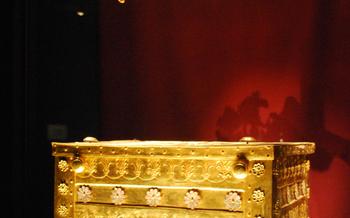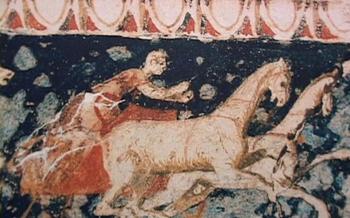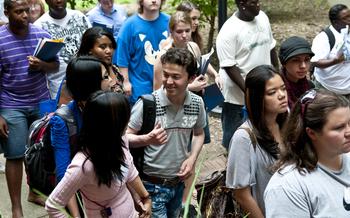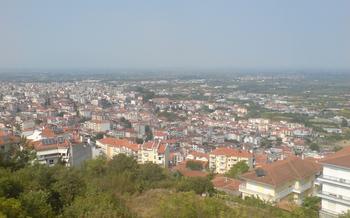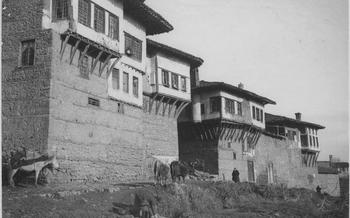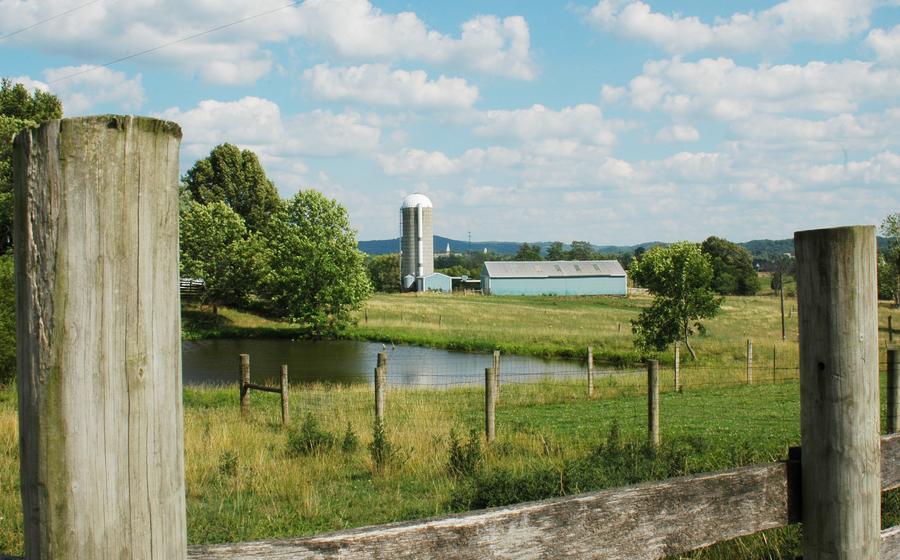
The Watermill in Agios Germanos (nearby attraction)
- The Watermill in Agios Germanos: A Hidden Gem
- Step Back in Time: History of the Watermill
- Exploring the Watermill's Unique Features
- Witnessing the Power of Water
- Uncovering the Secrets of Wheat Milling
- A Journey Through Time: Interactive Exhibits
- The Watermill as a Symbol of Community
- Preserving a Cultural Legacy
- Local Products and Delicacies
- Scenic Surroundings: A Breathtaking Landscape
- A Haven for Photographers
- Tranquility and Serenity: A Peaceful Retreat
- Educational Opportunities for All Ages
- A Touch of Adventure: Exploring the Area
- Insider Tip: The Best Time to Visit
The Watermill in Agios Germanos: A Hidden Gem
Nestled in the picturesque village of Agios Germanos, just a short drive from the vibrant city of Veria, lies a hidden gem that transports visitors back in time. The Watermill in Agios Germanos stands as a testament to the ingenuity and craftsmanship of a bygone era, offering a glimpse into the traditional way of life in rural Greece.
This centuries-old watermill, with its intricate stonework and timeworn machinery, is a testament to the enduring power of water and the human spirit. Once a vital part of the local community, the watermill has been lovingly restored and preserved, allowing visitors to experience the magic of this ancient technology firsthand.
The mill's strategic location on the banks of a swiftly flowing river, combined with its innovative water-powered mechanisms, showcases the ingenuity of its creators. Step inside and discover the intricate workings of this remarkable structure, and witness how the power of nature was harnessed to perform laborious tasks, shaping the lives of those who called this region home.
Step Back in Time: History of the Watermill
The Watermill in Agios Germanos stands as a testament to the rich history and cultural heritage of Veria. Its origins can be traced back to the early 19th century when it was meticulously constructed by skilled craftsmen using local materials. The mill's primary purpose was to grind wheat into flour, a crucial task in a region renowned for its agricultural prowess. It served as a vital part of the local economy, providing sustenance and supporting the livelihoods of the surrounding communities.
Over the centuries, the watermill has undergone various transformations and adaptations, reflecting the changing needs and technologies of its time. Initially powered solely by the force of the river's current, it later incorporated innovative mechanisms to improve efficiency and productivity. These modifications showcase the ingenuity and adaptability of the mill's operators, who continuously sought to optimize its performance.
The watermill played a significant role in shaping the traditional way of life in Greece. It fostered a sense of community, as people from neighboring villages would gather at the mill to exchange news, share stories, and lend a helping hand. The mill also served as a hub for social interactions, fostering a spirit of cooperation and camaraderie among the locals.
Exploring the Watermill's Unique Features
The Watermill in Agios Germanos captivates visitors with its intricate stonework and masonry, a testament to the skill and craftsmanship of its builders. The water-powered mechanisms and machinery, carefully preserved and maintained, offer a glimpse into the ingenuity and resourcefulness of traditional Greek engineering. Traditional tools and equipment, displayed throughout the mill, provide a tangible connection to the past, allowing visitors to imagine the daily lives of the millers and the bustling activity that once filled these spaces. The sensory experience of the watermill's ambiance, with the gentle sound of water flowing, the creaking of wooden gears, and the earthy scent of freshly ground flour, transports visitors back in time, creating a truly immersive and evocative experience.
Witnessing the Power of Water
The Watermill in Agios Germanos stands as a testament to the ingenuity and resourcefulness of our ancestors, harnessing the power of water to perform essential tasks. The mill's dependence on the river's flow is evident, as the waterwheel's rotation is directly driven by the force of the water. This simple yet effective mechanism demonstrates the principles of hydraulic engineering, showcasing how natural energy can be utilized for practical purposes.
The waterwheel, a remarkable feat of engineering, is a central feature of the mill. Its construction reveals a deep understanding of fluid dynamics, as the angled blades capture the water's energy and convert it into rotational motion. This motion is then transmitted to the millstones, which grind the wheat into flour.
The mill's operation highlights the sustainable practices of traditional societies. By relying on renewable water power, the mill avoided the use of fossil fuels and minimized its environmental impact. This harmonious relationship with nature serves as a reminder of the importance of sustainable practices in today's world.
Uncovering the Secrets of Wheat Milling
The watermill in Agios Germanos offers a fascinating glimpse into the traditional methods of wheat processing and flour production. Visitors can learn about the intricate steps involved in transforming wheat grains into the fine flour used in Greek cuisine.
The process begins with the cleaning and sorting of the wheat grains to remove any impurities. The cleaned wheat is then fed into a hopper, which releases a steady stream of grains into the millstones. The millstones, which are typically made of stone or metal, grind the wheat into a coarse flour.
The resulting flour is then sifted to separate the fine flour from the bran and other impurities. The fine flour is collected and stored, while the bran is either discarded or used as animal feed.
The watermill in Agios Germanos not only provides an educational experience but also highlights the importance of flour in Greek cuisine and culture. Flour is a staple ingredient in many traditional Greek dishes, such as bread, pastries, and pasta. It is also used to make a variety of sauces and dips.
The evolution of milling techniques over time is another interesting aspect of the watermill's story. In the past, watermills were the primary means of grinding wheat into flour. However, with the advent of industrialization, roller mills became more common. Roller mills are more efficient and can produce a finer flour.
Despite the rise of roller mills, watermills like the one in Agios Germanos continue to play an important role in preserving traditional milling techniques and the cultural heritage associated with them. Visitors to the watermill can gain a deeper understanding of the traditional Greek way of life and the importance of flour in Greek cuisine.
A Journey Through Time: Interactive Exhibits
The watermill in Agios Germanos offers a unique and engaging experience through its interactive exhibits. Educational displays and hands-on elements allow visitors to step back in time and immerse themselves in the history and culture of traditional wheat milling.
Storytelling and personal anecdotes bring the watermill's past to life, creating a personal connection between visitors and the site. Through these interactive elements, the watermill becomes a living museum, where visitors can not only learn about its history but also experience it firsthand.
Visitors can engage in hands-on activities, such as grinding wheat using traditional tools or operating the waterwheel, gaining a deeper understanding of the processes involved in wheat milling. These interactive exhibits provide a multisensory experience, allowing visitors to connect with the past through touch, sight, and sound.
The watermill's interactive exhibits not only educate and entertain visitors but also foster a sense of appreciation for traditional skills and craftsmanship. By engaging with these exhibits, visitors can gain a deeper understanding of the importance of preserving cultural heritage and the role that traditional practices play in shaping our world.
The Watermill as a Symbol of Community
The watermill in Agios Germanos stood as more than just a functional structure; it served as a vital gathering place for the local community. Villagers would congregate at the mill to exchange news, share stories, and strengthen their bonds. The mill's communal nature extended beyond mere social interactions; it was a place where people collaborated to ensure the smooth operation of the mill and the distribution of its products.
The mill's social significance was deeply intertwined with its economic role. Families would bring their wheat to be ground into flour, and the resulting flour would be used to bake bread for the entire community. This shared reliance on the mill fostered a sense of unity and cooperation among the villagers. The mill became a symbol of their collective efforts and their shared heritage.
Preserving the watermill is not just about safeguarding a historical relic; it's about honoring and perpetuating the spirit of community that it represents. The mill stands as a testament to the power of collaboration, the importance of shared resources, and the enduring bonds that tie people together.
Preserving a Cultural Legacy
The Watermill in Agios Germanos stands as a testament to the enduring legacy of traditional craftsmanship and engineering. Preserving this cultural gem requires a concerted effort to maintain its authenticity and ensure its survival for future generations. Restoration and conservation projects have been meticulously undertaken to restore the mill to its former glory, using traditional techniques and materials.
However, the challenges of maintaining authenticity are not insignificant. The mill's intricate mechanisms and machinery require specialized knowledge and skills to maintain their functionality. Finding artisans and craftsmen with the expertise to work on such a project can be challenging, and the materials used in the mill's construction may no longer be readily available.
Despite these challenges, the preservation of the Watermill in Agios Germanos is of paramount importance. It represents a unique opportunity to safeguard a piece of living history, showcasing the ingenuity and resourcefulness of past generations. By ensuring that the mill remains intact and operational, we can pass on this cultural legacy to future generations, allowing them to appreciate and learn from this remarkable feat of engineering.
Local Products and Delicacies
The Watermill in Agios Germanos is not just a historical attraction but also a hub for local products and delicacies. Visitors can explore shops selling a variety of locally produced goods, including traditional Greek food and delicacies. Supporting these local businesses not only ensures the preservation of traditional recipes and techniques but also contributes to the local economy.
Indulge in the flavors of the region by savoring traditional Greek dishes and sweets prepared with fresh, local ingredients. From handmade cheeses and honey to aromatic herbs and olives, the watermill offers a culinary journey that showcases the rich gastronomic heritage of Greece.
By purchasing local products, visitors not only support the local community but also create a sustainable cycle of preservation and appreciation for traditional craftsmanship and culinary traditions. So, take the opportunity to taste the delicious offerings of the watermill and take home a piece of the region's culinary culture.
Scenic Surroundings: A Breathtaking Landscape
Nestled amidst a tapestry of natural beauty, the Watermill in Agios Germanos offers visitors a breathtaking landscape that complements its historical charm. Surrounded by lush greenery, the mill stands as a testament to the harmonious coexistence of human ingenuity and the wonders of nature. The river that powers the mill meanders through the serene countryside, creating a picturesque backdrop for this hidden gem.
The surrounding mountains add a majestic touch to the landscape, inviting visitors to explore the region's natural wonders. Whether you prefer leisurely walks along the riverbank or challenging hikes up the mountain trails, the area provides ample opportunities for outdoor enthusiasts. Take a moment to savor the tranquility of the surroundings, enjoy a picnic lunch with friends and family, or simply bask in the beauty of nature's embrace.
The Watermill in Agios Germanos not only offers a glimpse into the past but also invites you to explore the region's scenic splendor. Embrace the opportunity to capture the essence of Greece's natural wonders through photography or simply soak in the tranquility of this enchanting setting. Let the beauty of the landscape captivate your senses and create lasting memories of your visit to Veria.
A Haven for Photographers
The Watermill in Agios Germanos presents a picturesque landscape that is sure to captivate the hearts of photography enthusiasts. With its rustic charm and unique architectural features, the mill offers endless opportunities for capturing stunning images. Photographers can explore different angles and perspectives to showcase the mill's beauty, from close-up shots of the intricate stonework to panoramic views that capture the surrounding natural scenery. The tranquil ambiance of the mill provides an ideal environment for photographers to immerse themselves in the beauty of the moment and create lasting memories. Whether you're a professional photographer or simply looking to capture the essence of Greece's rich cultural heritage, the Watermill in Agios Germanos is a must-visit destination.
Tranquility and Serenity: A Peaceful Retreat
Tucked away in the picturesque landscape, the Watermill in Agios Germanos offers an escape from the hustle and bustle of modern life. Embraced by nature's serenity, visitors can immerse themselves in the tranquility of this hidden gem. The gentle murmur of the river, the rustling of leaves in the breeze, and the rhythmic sound of the waterwheel create a soothing symphony that invites relaxation and contemplation.
As you step into the watermill's courtyard, a sense of peace envelops you. The air is fresh and crisp, carrying the scent of wildflowers and the sound of birdsong. Take a moment to sit on one of the benches and let the serenity wash over you. Close your eyes and listen to the soothing sounds of nature, allowing your mind to wander and your worries to melt away.
Whether you seek solace from the stresses of everyday life, inspiration for your creative pursuits, or simply a chance to reconnect with yourself, the Watermill in Agios Germanos provides the perfect sanctuary. Embrace the tranquility of this peaceful retreat and find moments of stillness amidst the timeless beauty of nature and history.
Educational Opportunities for All Ages
The Watermill in Agios Germanos offers a rich educational experience for visitors of all ages. Families with children can engage in interactive activities and workshops that teach about traditional crafts and the history of the mill. Children can learn about the importance of preserving cultural heritage while having fun and creating their own crafts.
Adults, too, can find educational opportunities at the watermill. Demonstrations and workshops provide hands-on experiences that allow visitors to understand the intricate processes involved in wheat milling and traditional crafts. These activities create a deeper appreciation for the skills and knowledge that have been passed down through generations.
Additionally, the watermill's interactive exhibits and storytelling sessions offer a unique glimpse into the lives of the people who worked and lived in this historic site. Visitors can connect with the past through personal anecdotes and stories, gaining a deeper understanding of the role the watermill played in the local community.
By providing educational experiences for all ages, the Watermill in Agios Germanos not only preserves cultural heritage but also fosters a sense of appreciation and understanding for traditional skills and practices.
A Touch of Adventure: Exploring the Area
Beyond the watermill itself, the surrounding region offers a wealth of attractions and activities for the adventurous traveler. For those seeking a connection with nature, picturesque hiking trails wind through the lush landscapes, leading to hidden waterfalls and breathtaking viewpoints. Pack a picnic lunch and find a secluded spot along the riverbank, surrounded by the tranquil sounds of nature.
History buffs will delight in exploring the nearby landmarks and villages, each with its own unique story to tell. Visit the ancient ruins of Vergina, once the capital of the powerful kingdom of Macedonia, and immerse yourself in the rich history of Alexander the Great. Discover traditional Greek villages nestled among rolling hills, where time seems to stand still and the locals welcome visitors with open arms.
For a truly authentic experience, embark on a culinary adventure and savor the flavors of the region. Indulge in mouthwatering local delicacies at traditional tavernas, where you can sample freshly caught fish, succulent grilled meats, and homemade pastries. Immerse yourself in the vibrant atmosphere of local markets, where you can haggle for unique souvenirs and find hidden culinary treasures.
Whether you seek adventure, history, or culinary delights, the area surrounding the Watermill in Agios Germanos offers a diverse and unforgettable travel experience. Embrace the spirit of exploration and discover the hidden gems of this captivating region.
Insider Tip: The Best Time to Visit
To fully appreciate the magic of the watermill in Agios Germanos, plan your visit wisely. The early morning hours, around sunrise, offer a serene and picturesque atmosphere, with soft light illuminating the mill and its surroundings. This is an ideal time for photographers to capture stunning shots without the distraction of crowds.
As the day progresses, the mill welcomes more visitors, but the charm remains undiminished. If you prefer a quieter experience, consider visiting during the weekdays, avoiding weekends and holidays when the mill tends to be busier.
Remember to plan for a leisurely visit, allowing ample time to explore the mill's interior, engage with the interactive exhibits, and soak in the tranquility of the surroundings. A comfortable pair of shoes is recommended for walking around the mill and exploring the nearby paths.
Before your visit, check the weather forecast to ensure you dress appropriately and bring any necessary items like a hat, sunscreen, or raincoat. The mill's opening hours may vary depending on the season, so it's advisable to contact the local tourist office or check online for up-to-date information.
By following these insider tips, you'll make the most of your visit to the watermill in Agios Germanos, creating lasting memories of this unique and captivating attraction.
